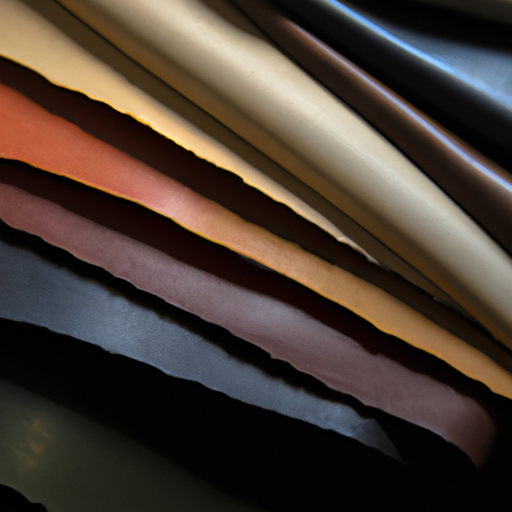This blog post provides a comprehensive guide on how to take care of leather furniture to prolong its lifespan and maintain its aesthetic value. It explores the do's of leather furniture care, including cleaning, conditioning, and protecting from harmful elements.
Understanding your Leather Furniture: What Type of Leather Do You Have?
Leather furniture can add a touch of elegance and sophistication to any home. However, not all leather furniture is created equal. It's important to understand the type of leather you have in order to properly care for it. There are several different types of leather commonly used in furniture, including full-grain leather, top-grain leather, corrected-grain leather, and bonded leather.
Full-grain leather is considered the highest quality and most durable type of leather. It is made from the top layer of the hide and retains its natural texture and markings. Top-grain leather is also high-quality but has been sanded and buffed to remove any imperfections. Corrected-grain leather is lower in quality and has been treated to remove any blemishes or scars. Bonded leather, on the other hand, is the lowest quality and is made from scraps of leather that are bonded together with a polyurethane coating.
To identify the type of leather you have, look for markings or labels on your furniture. Full-grain and top-grain leather will often have a more natural appearance with visible markings, while corrected-grain and bonded leather may have a more uniform and synthetic look. Additionally, full-grain and top-grain leather will feel softer and more supple to the touch, while corrected-grain and bonded leather may feel stiffer and less natural.
An image showing different types of leather materials used in furniture.
Cleaning Your Leather Furniture: How Often Should You Do It?
Cleaning your leather furniture is an essential part of its maintenance and upkeep. However, the frequency at which you should clean your leather furniture depends on several factors. First, consider the amount of use your furniture gets. If you have a heavily used sofa or chair that is prone to spills and stains, it may require more frequent cleaning. On the other hand, if your leather furniture is in a less frequently used room, cleaning it once or twice a year may be sufficient.
Another factor to consider is the environment in which your leather furniture is placed. If your furniture is exposed to high levels of dust, pet dander, or other allergens, it may require more frequent cleaning. Additionally, if you live in a humid climate, your leather furniture may be more prone to mold and mildew, necessitating more regular cleaning.
In general, it is recommended to lightly clean your leather furniture on a weekly basis. This can be done by gently dusting the surface with a soft cloth or using a vacuum cleaner with a soft brush attachment to remove any loose dirt or debris. For deeper cleaning, it is advisable to use a mild, pH-neutral leather cleaner that is specifically formulated for your type of leather.
It is important to note that excessive cleaning can actually damage your leather furniture. Over-cleaning can strip the natural oils from the leather, leaving it dry and prone to cracking. Therefore, it is important to strike a balance and clean your leather furniture when necessary, but not excessively.
"Conditioning: The Secret to Long-lasting Leather Furniture"
Conditioning is a crucial step in caring for leather furniture. Leather is a natural material that requires regular moisturizing to maintain its suppleness and prevent it from drying out or cracking. Conditioning helps to replenish the natural oils in the leather, keeping it soft, flexible, and resistant to wear and tear.
To condition your leather furniture, start by thoroughly cleaning it to remove any dirt or debris. Once the surface is clean and dry, apply a leather conditioner using a soft, lint-free cloth. Gently massage the conditioner into the leather in circular motions, ensuring that it is evenly distributed. Allow the conditioner to penetrate the leather for the recommended amount of time, usually around 15 minutes.
After the conditioning time has passed, use a clean cloth to gently remove any excess conditioner from the surface. It is important not to leave any residue behind, as it can attract dirt and cause a dull appearance. Allow the leather to fully dry before using or sitting on the furniture.
The frequency of conditioning depends on various factors such as the type of leather, level of use, and environmental conditions. As a general guideline, it is recommended to condition your leather furniture every six to twelve months. However, if you live in a dry climate or have particularly dry or cracked leather, more frequent conditioning may be necessary.
An illustration demonstrating how to apply conditioner on a leather chair.
Protecting Your Leather Furniture: Do You Know What Harms Your Furniture?
Leather furniture adds a touch of elegance and sophistication to any space. To ensure its longevity, it is essential to protect it from potential hazards that can cause damage. Let's take a closer look at some common culprits that can harm your leather furniture and how to avoid them.
- 1. Direct Sunlight:
Exposure to direct sunlight can cause fading and drying out of leather. UV rays can penetrate through windows and gradually fade the color of your furniture. To protect your leather, position it away from direct sunlight or use curtains, blinds, or UV-filtering window films to block out harmful rays. - 2. Heat and Humidity:
Extreme temperatures and high humidity levels can also wreak havoc on leather furniture. Heat can cause the leather to dry out and crack, while excessive humidity can promote the growth of mold and mildew. Avoid placing your leather furniture near heating vents, fireplaces, or radiators. Additionally, use a dehumidifier or air conditioner to maintain optimal humidity levels in your home. - 3. Harsh Cleaning Agents:
Using harsh cleaning agents, such as bleach or ammonia-based products, can strip away the natural oils and protective coatings of leather, leading to dryness and damage. Instead, opt for gentle and leather-specific cleaning solutions. Always test any cleaning product on a small, inconspicuous area before applying it to the entire piece of furniture. - 4. Sharp Objects and Pets:
Leather furniture is susceptible to scratches and punctures caused by sharp objects or pet claws. To minimize the risk, keep sharp objects away from the furniture and trim your pet's nails regularly. Additionally, consider using protective covers or throws to shield your leather furniture from potential damage.
Leather Furniture Care Do's:
| Task | Frequency | Products | Tools |
|---|---|---|---|
| Clean | Monthly | Mild Soap and Water | Soft Cloth |
| Condition | Every 6-12 Months | Leather Conditioner | Soft Cloth |
| Protect | Monthly | Leather Protector | Soft Cloth |
| Rotate Cushions | Monthly | None | None |
Caring for your leather furniture doesn't have to be a daunting task. With the right knowledge and techniques, you can keep your favorite pieces looking new and lasting longer. Remember, the key to maintaining leather furniture is regular cleaning, conditioning, and protection from extreme conditions. Do these, and your leather furniture will continue to add beauty and comfort to your home for many years to come.



